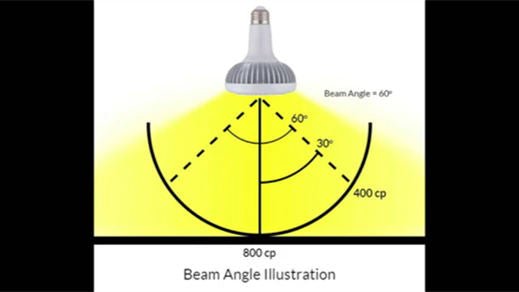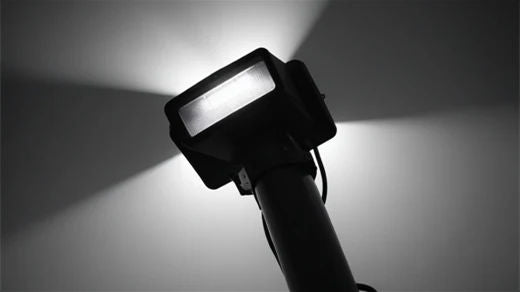LED street lights have revolutionized urban and suburban lighting with their energy efficiency, long lifespan, and improved visibility. One crucial aspect that determines their effectiveness is the beam angle. Understanding the beam angle of LED street lights is essential for optimizing their performance and ensuring that they meet specific lighting requirements. This blog will delve into the importance of beam angles, how they affect street lighting, and considerations for choosing the right beam angle for various applications.
What is Beam Angle?
Beam angle is the angle at which light is emitted from the light source. It is measured in degrees and indicates the spread of light produced by the LED. The beam angle determines how the light is distributed across a given area. A smaller beam angle results in a narrow, focused light beam, while a larger beam angle provides a wider, more dispersed light.
Importance of Beam Angle in LED Street Lights
1. Illumination Coverage
The primary purpose of street lighting is to provide adequate illumination for safe and comfortable visibility. The beam angle plays a critical role in achieving this goal. A well-chosen beam angle ensures that the light covers the intended area without leaving dark spots or creating excessive glare. This is particularly important for streets, highways, and pedestrian pathways where consistent and uniform lighting is crucial for safety.
2. Light Distribution
Light distribution patterns are heavily influenced by the beam angle. There are various types of light distribution patterns used in street lighting, such as Type I, Type II, Type III, Type IV, and Type V. Each type is designed for specific applications and uses different beam angles to achieve the desired distribution. For instance, Type II distribution, with a medium-width beam, is suitable for wide walkways, while Type V distribution, which emits light in all directions, is ideal for large open areas like intersections and parking lots.
3. Energy Efficiency
Proper beam angle selection can enhance the energy efficiency of LED street lights. By directing light precisely where it is needed, it minimizes light spill and reduces the overall energy consumption. This targeted approach ensures that the maximum amount of light reaches the ground, optimizing illumination without wasting energy.
4. Glare Reduction
Glare can be a significant issue in street lighting, causing discomfort and reducing visibility for drivers and pedestrians. Choosing the right beam angle helps mitigate glare by controlling the direction and spread of light. A narrow beam angle can prevent light from scattering into the eyes of drivers, while a wider beam angle can be adjusted to ensure even lighting without harsh contrasts.

Factors to Consider When Choosing Beam Angle
1. Application Area
The specific area to be illuminated greatly influences the choice of beam angle. For instance, narrow streets and alleys may require a different beam angle compared to wide highways or open plazas. Identifying the area and its unique lighting requirements is the first step in selecting the appropriate beam angle.
2. Mounting Height
The height at which the LED street lights are mounted affects how the light is distributed. Higher mounting heights typically require a narrower beam angle to ensure the light reaches the ground effectively, while lower mounting heights can utilize wider beam angles to cover a broader area.
3. Pole Spacing
The distance between light poles also impacts the beam angle selection. Closely spaced poles can use wider beam angles to ensure overlapping light patterns and prevent dark spots. Conversely, poles that are spaced further
apart may benefit from narrower beam angles to ensure that the light reaches the ground between the poles effectively.
4. Light Intensity and Output
The lumen output of the LED light fixture should be considered alongside the beam angle. High-intensity lights with a narrow beam angle can create bright, focused illumination, which might be suitable for certain applications like illuminating specific points of interest or security lighting. Conversely, lower intensity lights with a wider beam angle can provide more uniform lighting over a broader area, which is often desired in street lighting.
5. Environmental Considerations
Environmental factors, such as weather conditions, can influence the effectiveness of different beam angles. For example, areas prone to fog or heavy rain might benefit from narrower beam angles that cut through adverse weather conditions more effectively. In contrast, areas with clear weather conditions can use wider beam angles without significant loss of light intensity.

Types of Beam Angles and Their Applications
Narrow Beam Angles (15°-30°)
Narrow beam angles create a focused light that is ideal for applications requiring high-intensity illumination on a specific area. In street lighting, narrow beam angles are often used for:
- Highlighting Specific Areas: Such as crosswalks, building facades, or monuments.
- Security Lighting: To concentrate light on entry points or sensitive areas.
Medium Beam Angles (30°-60°)
Medium beam angles offer a balance between focused and dispersed light, providing a good mix of intensity and coverage. They are commonly used for:
- Residential Streets: Where balanced lighting is required to ensure visibility and safety.
- Pathways and Walkways: Ensuring that pedestrians have adequate lighting without excessive spillover.
Wide Beam Angles (60°-120°)
Wide beam angles produce a broad spread of light, which is suitable for illuminating large areas uniformly. They are typically used for:
- Parking Lots: To cover large areas with fewer fixtures, reducing installation and maintenance costs.
- Open Plazas and Intersections: Providing comprehensive illumination to enhance safety and visibility.
Ultra-Wide Beam Angles (120° and above)
Ultra-wide beam angles provide the widest coverage and are ideal for applications where extensive illumination is required over a large area. These are used in:
- Public Squares: To ensure uniform lighting for events or public gatherings.
- Sports Fields: Where wide coverage is needed to illuminate the entire playing area.
Practical Examples of Beam Angle Selection
Urban Streets
In urban street lighting, medium beam angles (30°-60°) are often preferred to provide balanced illumination that enhances visibility for both drivers and pedestrians. The goal is to create a safe and pleasant environment while minimizing light pollution.
Highways and Expressways
For highways and expressways, narrower beam angles (15°-30°) are more suitable. These angles ensure that the light is focused on the road, providing high-intensity illumination that improves visibility and safety for fast-moving vehicles.
Residential Areas
Residential areas benefit from wider beam angles (60°-120°) that provide uniform lighting across sidewalks, driveways, and front yards. This type of lighting enhances security and creates a welcoming environment without the harshness of overly bright lights.
Industrial and Commercial Areas
In industrial and commercial settings, a combination of beam angles might be used. Narrow beam angles can be employed to highlight specific work areas or entry points, while wider beam angles can ensure overall site illumination.

Conclusion
The beam angle of LED street lights is a critical factor that influences the effectiveness, efficiency, and safety of street lighting. By understanding the nuances of different beam angles and their applications, city planners, engineers, and lighting designers can make informed decisions that enhance urban and suburban environments. Properly selected beam angles not only improve visibility and safety but also contribute to energy savings and reduced maintenance costs, making them a cornerstone of modern, sustainable street lighting solutions.
When planning or upgrading street lighting systems, consider the specific requirements of the area, the mounting height of the fixtures, and the desired light distribution pattern. By doing so, you can ensure that the chosen LED street lights provide optimal illumination, enhancing both functionality and aesthetics of the urban landscape.


































Leave a comment
This site is protected by hCaptcha and the hCaptcha Privacy Policy and Terms of Service apply.